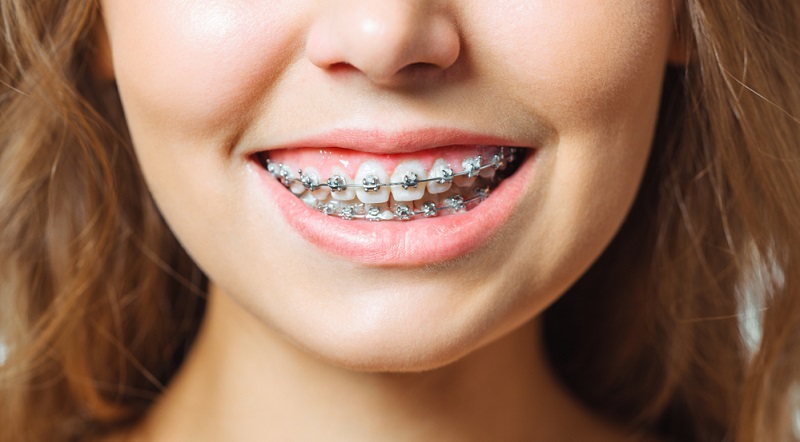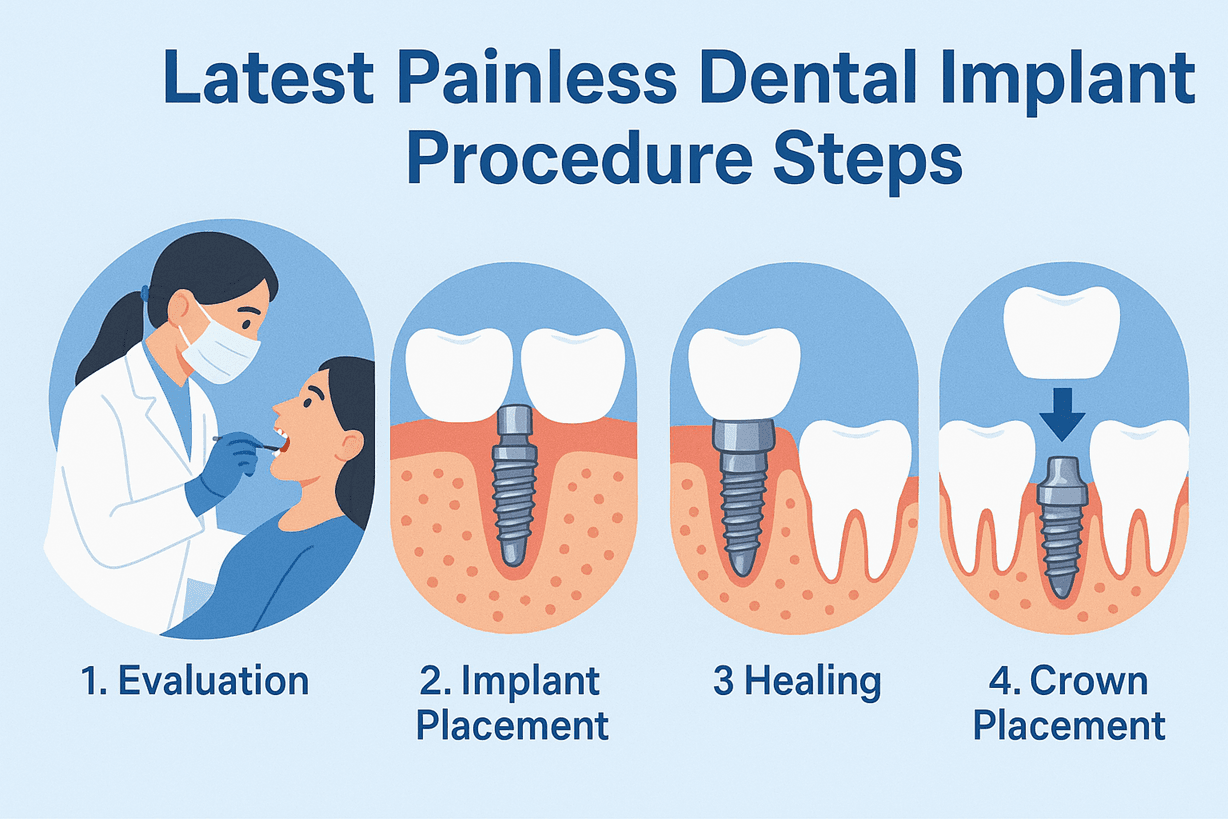Contents
Are you seeking a quick and easy way to straighten your teeth? Self-ligating braces are a novel approach that can help you attain your goals quickly!
Self-ligating braces are a handy approach to acquiring the straight teeth you've always wanted, with fewer visits to the orthodontist, shorter wait times at appointments, and faster treatment overall.
Furthermore, their specialized brackets make them nearly invisible when you smile!
Continue reading to learn more about self-ligating braces and how they can assist your dental health.

What Are Self-Ligating Braces?
Self-ligating braces are an orthodontic therapy that can assist teeth straightening. They resemble ordinary metal braces, but the brackets include a specialized door that collects and secures the archwire.
Because the wires are not linked with elastics, the orthodontist can adjust them more easily. Unlike traditional braces, self-ligating braces use brackets and an archwire to straighten teeth without using coloured rubber bands.
This brace type produces less friction and pain in the mouth than standard braces and brackets. Unlike using rubber bands to connect the brackets to the archwire, self-ligating braces directly to the archwire with the help of a special bracket.
As a result, the braces treatment is more streamlined and inconspicuous, drawing less attention to the orthodontic device. Self-ligating brackets are available in transparent and metal finishes, with the wire frequently coloured in metal.
Self-ligating braces and their application to the teeth are similar to regular braces. The orthodontist attaches brackets straight to your teeth, then bends the archwire over them, fastening it at each end in specialized metal bands that wrap around your molars.
Rather than utilizing colourful rubber bands to connect the archwire to the brackets, self-ligating brackets are designed to hold the wire in a specific space where the wire slips through.
Although this therapy has been available for decades, it has recently gained popularity. This is due to the numerous advantages it provides. Self-ligating brackets provide several characteristics that make them appealing to patients.
These braces are made of stainless steel or ceramic materials and require fewer adjustments than traditional braces, making them more comfortable for patients and saving orthodontists time.
The Benefits of Self-Ligating Braces
The advantages of self-ligating braces extend beyond convenience and comfort; they also improve treatment efficiency. The absence of elastic ties allows the archwires to move freely, resulting in faster tooth movement than regular braces.
Self-ligating braces are far more appealing than their rivals. The door design avoids rubber bands, which can discolour with time and produce microscopic holes where food particles might become trapped, resulting in increased plaque formation.
In orthodontic treatments, self-ligating braces can manage the same degree of arrangements as traditional braces.
They not only appear sleeker than standard metal or ceramic brackets, but some varieties also offer clear bracket alternatives that make them nearly undetectable - ideal for individuals who desire straighter teeth but don't want anyone else to know about their orthodontic journey!
They do, however, use cutting-edge technology to improve the efficiency and comfort of your therapy.
Some of the benefits of self-ligating braces are as follows:
- Cleaning is significantly easier, and there are fewer plaque-forming locations or opportunities.
- Rapid treatment
- Less friction, less tooth damage
- Treatment time is shorter than with other types of braces.
- Fewer dentist appointments mean more time to devote to other vital pursuits.
- Appropriate for persons who are conscious of their image and appearance.
Self-Ligating Braces vs Traditional Braces
- Self-ligating braces are a novel and effective method of obtaining a beautiful smile. Instead of rubber bands like standard braces, these braces are attached with unique clips that slide around the bracket.
- Because the clips automatically adapt to regular changes in tooth position, self-ligating braces require fewer frequent adjustments, making them more comfortable to wear than traditional braces.
- Furthermore, self-ligating brackets move teeth more quickly and precisely than traditional braces, resulting in fewer orthodontic visits and a shorter overall treatment period.
- Rubber bands hold an archwire in place in traditional metal or ceramic braces. These rubber bands must be tightened or replaced as needed during frequent checkups, which can be uncomfortable and difficult to maintain.
- Self-ligating brackets, on the other hand, do not require rubber bands, making them intrinsically easier to clean because there is no possibility of trapped food particles contributing to plaque accumulation or cavities.
- Furthermore, because there is no need for regular wire tightening, self-ligating brackets assist in alleviating pain associated with wearing metal or ceramic braces.
- Consider your own goals for your smile transformation journey while deciding between self-ligating braces and traditional braces.
- Traditional metal and ceramic choices may be less expensive at first, but the additional visits necessary by your orthodontist for modifications may end up costing you more money in the long term.
- However, because of their automatic adjustment feature, self-ligating solutions provide all of the benefits of faster treatment time while saving money on future visits!
- When it comes to what's ideal for each person's needs, ultimately deciding between these two solutions comes down to individual preference - so spend some time now to figure out which one works best for you!
Self-Ligating Braces vs Ceramic Braces
- When it comes to straightening teeth, two popular options are self-ligating braces and ceramic braces. Each has its own unique features and considerations to keep in mind.
- Ceramic braces offer similar efficiency to self-ligating braces but come at an additional cost due to their ceramic material. While they provide the same level of straightening power as regular metal brackets, ceramic braces have the advantage of blending in with your teeth' colour, making them less noticeable when you smile.
- However, it's important to handle ceramic braces with care as the brackets can chip or break if not treated properly, potentially causing damage to your teeth. These braces are typically made of porcelain or ceramic materials and can be translucent or tooth-coloured.
- Research has shown that ceramic brackets are less likely to dislodge compared to metal brackets. They can also be less problematic during MRI scans, reducing the chances of picture distortion and signal loss, according to studies.
- It's worth noting that ceramic braces may be more expensive than metal braces, and they have been associated with a higher risk of enamel demineralization, which occurs when the hard minerals on the tooth's surface are diminished.
- When choosing between self-ligating and ceramic braces, it's crucial to carefully consider your priorities. If you're looking for an economical yet effective solution, self-ligating braces may be the best choice.
- On the other hand, if aesthetics are your main concern, ceramic braces can provide a more discreet appearance. However, the risk of chipping or breaking should be taken into account.
- Consulting your dentist is crucial in determining the best type of brace for your specific needs. They can provide expert advice based on your individual circumstances, ensuring that you make an informed decision that aligns with your goals.
Self-Ligating Braces Cost Comparison
When compared to other orthopaedic braces, this type of brace may be slightly more expensive. The reason for this is that they are technologically and comfortably superior to traditional braces.
Many people seeking orthodontic treatment are interested in how much self-ligating braces cost in India.
Self-ligating braces have become more inexpensive and readily available across the country in recent years.
Self-ligating braces are widely regarded as one of the most effective and efficient methods of straightening teeth and correcting bite abnormalities.
The cost of self-ligating braces varies substantially based on the individual's needs and the severity of their misalignment. In India, the average price range for self-ligating braces is between INR 35,000 and INR 55,000 per arch.
Conclusion
Overall, self-ligating braces are a good alternative for correcting misaligned teeth at a low cost when compared to other forms of orthodontic treatments available from Indian dentists today.
The benefits of this type of treatment include:
- Faster results than traditional metal brackets;
- Fewer adjustments are required over time;
- Less friction is generated due to its smooth design;
- Improved hygiene due to its tight fit around each tooth, which eliminates food particles becoming trapped in between brackets, as is the case with traditional metal braces.


